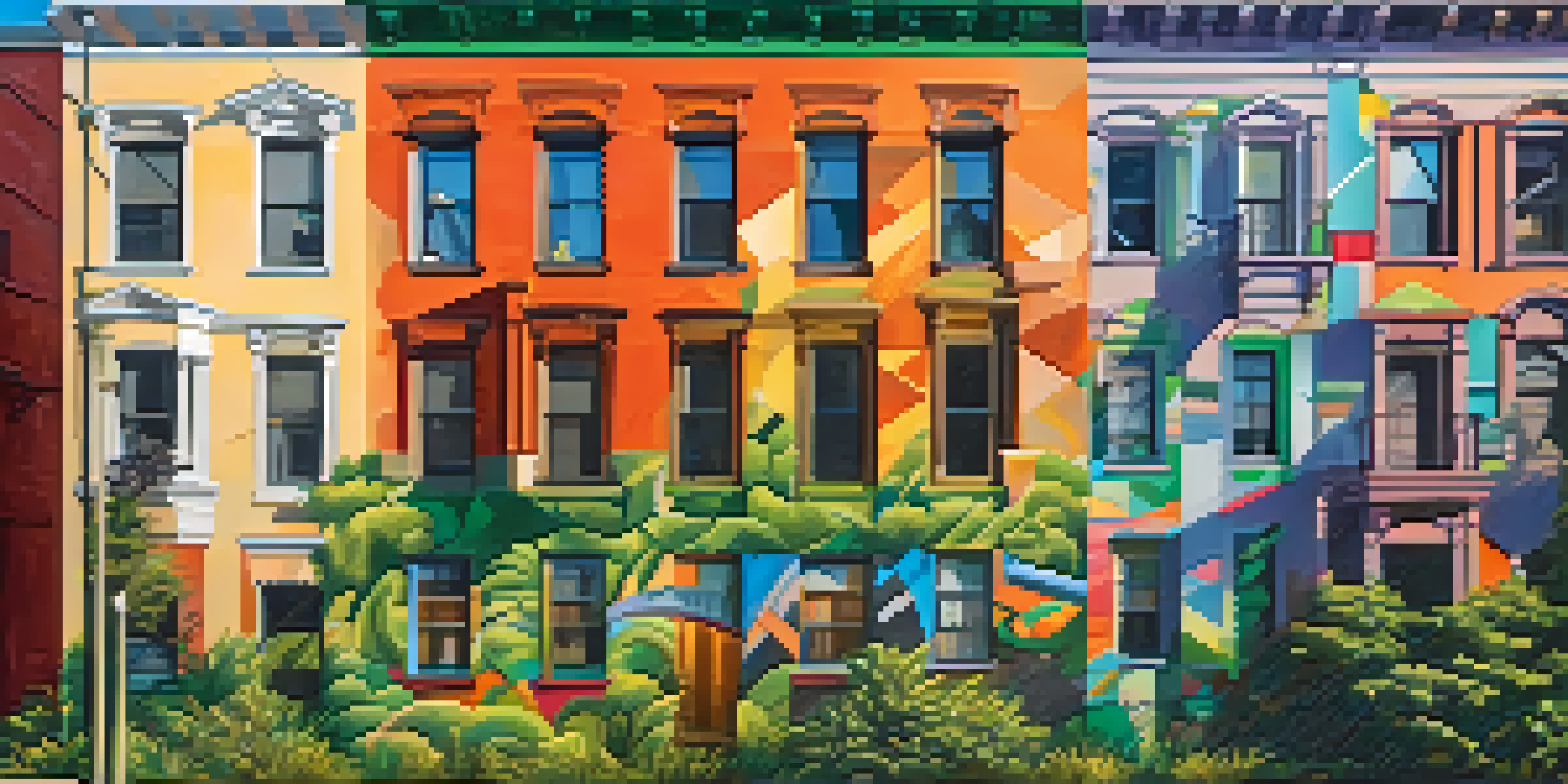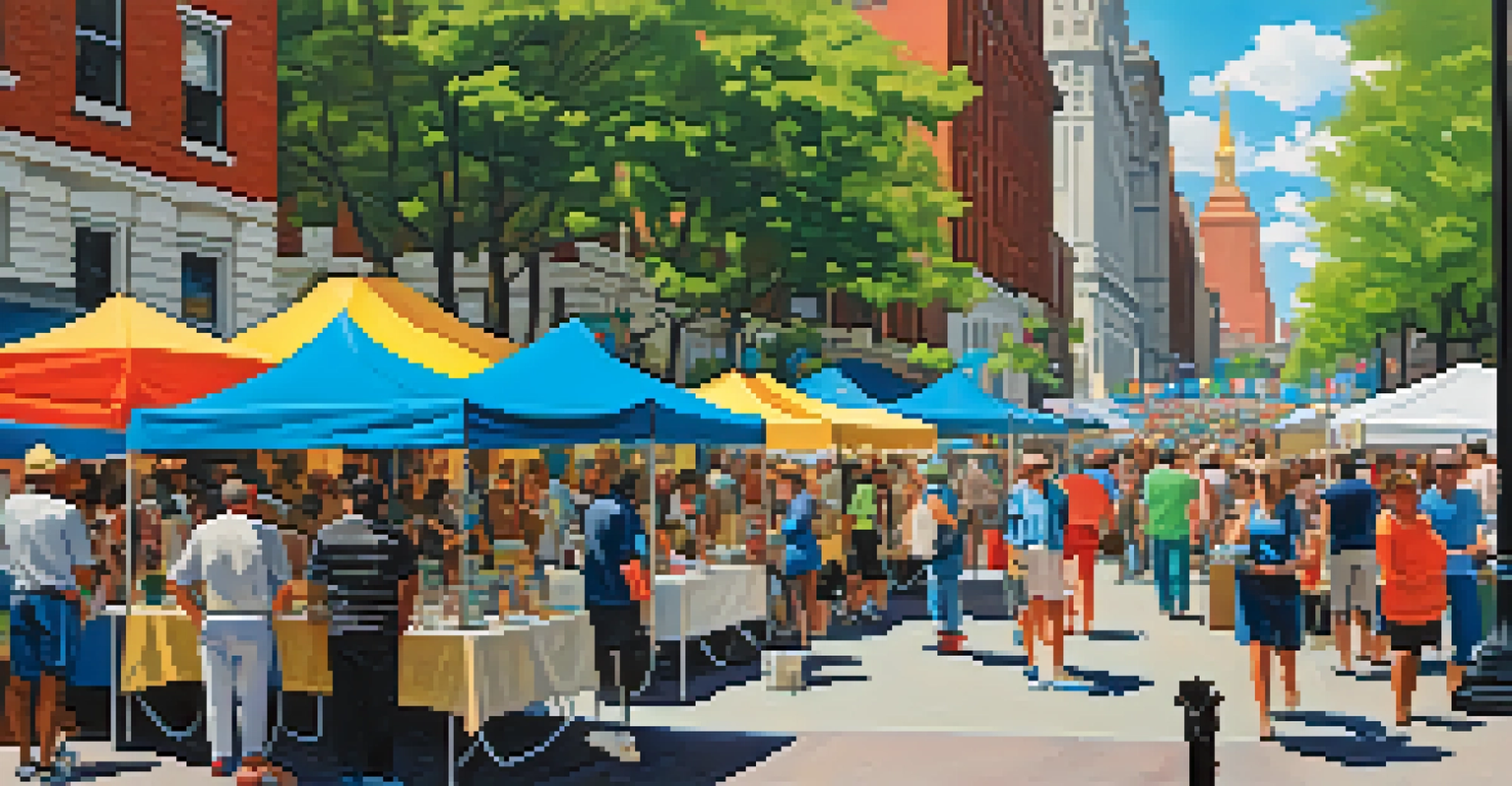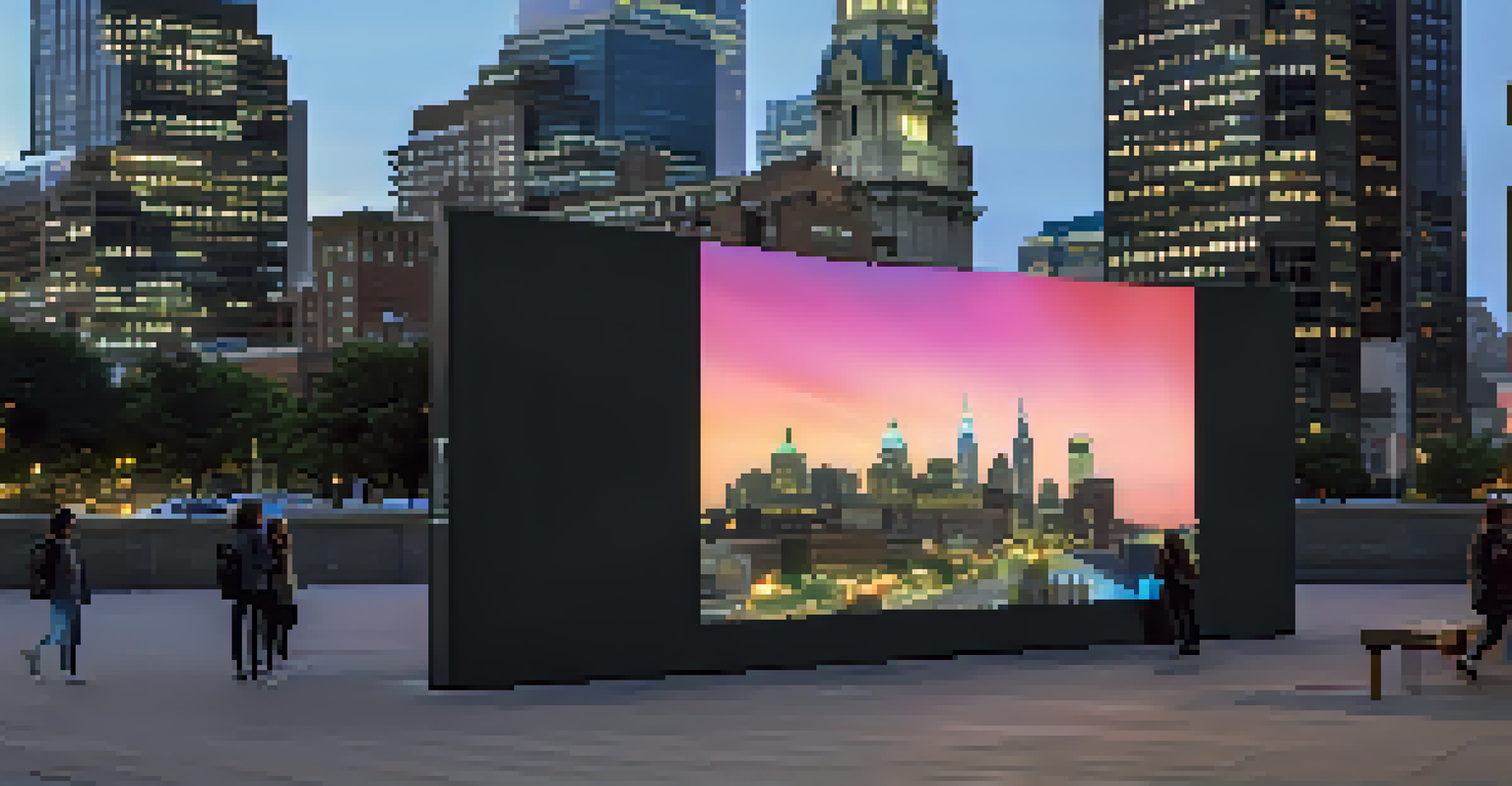The Role of Art in Philadelphia's Urban Development Strategy

Understanding Philadelphia's Urban Development Strategy
Philadelphia's urban development strategy is a comprehensive plan aimed at enhancing the city's infrastructure, economy, and community life. By integrating various elements, it focuses on improving public spaces, transportation, and housing. This approach not only addresses immediate needs but also considers long-term sustainability and growth.
Art is the most beautiful of all lies; it is the most truthful of all things.
Art plays a pivotal role in this strategy, serving as a catalyst for community engagement and cultural enrichment. Urban development isn't just about buildings; it’s about creating vibrant spaces where people can connect and thrive. By incorporating art into planning, Philadelphia aims to foster a sense of identity and belonging among its residents.
The city recognizes that art can transform neglected areas into thriving neighborhoods. By investing in public art projects and cultural initiatives, Philadelphia enhances its appeal to both residents and visitors. This, in turn, contributes to economic growth and a renewed interest in urban living.
The Historical Context of Art in Philadelphia
Philadelphia has a rich artistic history that dates back to its founding. The city has long been a hub for creativity, from the early days of American art to the thriving contemporary scene today. Historical landmarks and museums, such as the Philadelphia Museum of Art, exemplify the city’s commitment to preserving and showcasing its artistic heritage.

Over the years, art has been intertwined with the city’s development, influencing various movements and styles. This connection between art and urban growth has shaped Philadelphia into a place where culture and history coexist with modernity. By understanding this historical context, we can appreciate the role of art in shaping the city’s identity.
Art Enhances Community Engagement
Public art initiatives invite residents to participate in the creative process, fostering a sense of ownership and pride within the community.
In recent years, efforts have been made to highlight this artistic legacy through public art initiatives. Murals, sculptures, and installations now tell the stories of Philadelphia's past while inspiring future generations. These artistic expressions not only beautify the city but also serve as reminders of its rich cultural tapestry.
Public Art as a Tool for Community Engagement
Public art projects are essential for fostering community engagement in Philadelphia. These initiatives invite residents to participate in the creative process, allowing them to express their thoughts and emotions through art. Such involvement helps build a sense of ownership and pride within the community.
Public art is a way to create a dialogue between the city and its residents, fostering a sense of community and belonging.
Art can also serve as a conversation starter, bringing people together to discuss important local issues. For example, community murals often reflect social themes that resonate with residents, sparking dialogue and collaboration. This shared experience strengthens community bonds and encourages collective action.
As neighborhoods evolve, public art helps maintain a connection to their roots. By showcasing local artists and themes, these projects honor the unique identity of each area. This approach not only beautifies the urban landscape but also reinforces a sense of belonging among residents.
Art in Revitalizing Underdeveloped Areas
Art has proven to be an effective tool in revitalizing underdeveloped areas of Philadelphia. By transforming empty lots and abandoned buildings into vibrant art spaces, the city breathes new life into neglected neighborhoods. This revitalization attracts visitors and potential residents, sparking economic growth.
For instance, initiatives like the Mural Arts Program have transformed walls into canvases, showcasing the talent of local artists. These murals not only beautify the surroundings but also tell the stories of the community, making art an integral part of the urban landscape. They serve as landmarks that draw people in and encourage exploration.
Art Revitalizes Neglected Areas
Transforming underdeveloped spaces into vibrant art hubs attracts visitors and stimulates economic growth in Philadelphia.
Furthermore, these artistic transformations help to change perceptions of previously overlooked areas. As more people visit and engage with these revitalized spaces, local businesses often flourish. This creates a positive feedback loop where art, community, and commerce support and uplift one another.
Art and Economic Development in Philadelphia
The economic impact of art on Philadelphia's urban development cannot be overstated. Cultural events, galleries, and theaters draw significant tourism, contributing to the local economy. When people come to experience the city's artistic offerings, they also support surrounding businesses, from restaurants to shops.
Moreover, art creates jobs and opportunities for local artists and creatives. By investing in arts programs and initiatives, Philadelphia fosters a vibrant creative economy that attracts talent and innovation. This not only enhances the city’s cultural scene but also positions it as a competitive player in the broader economic landscape.
The intersection of art and commerce is evident in initiatives like the Philadelphia Art Alliance, which promotes local artists while contributing to economic growth. By showcasing their work, these platforms generate revenue and recognition, helping to sustain the artistic community. This symbiotic relationship benefits both the artists and the city as a whole.
Art as a Means of Social Change
Art has the power to drive social change, and Philadelphia is no exception. Through various artistic expressions, communities can raise awareness about pressing social issues. Art becomes a voice for the marginalized, allowing them to share their stories and experiences with a wider audience.
Projects that focus on social justice, inclusion, and equity often utilize art as a platform for advocacy. For example, community murals can highlight issues like racial equality or environmental justice, prompting discussions and inspiring action. This ability to provoke thought and dialogue is one of art's most significant contributions to urban development.
Art Drives Economic Growth
Cultural events and local art initiatives contribute significantly to Philadelphia's economy by attracting tourism and creating jobs.
By encouraging social change through art, Philadelphia fosters a more inclusive and equitable city. This commitment to using art as a tool for advocacy aligns with the urban development strategy, ensuring that all voices are heard and represented. In this way, art not only beautifies the city but also shapes its future.
The Future of Art in Philadelphia's Urban Landscape
As Philadelphia continues to grow and evolve, the role of art in urban development will remain crucial. The city is committed to fostering a vibrant arts scene that reflects its diverse communities. Future initiatives will likely focus on integrating art into public spaces and enhancing accessibility for all residents.
Innovative projects that combine technology and art are also on the horizon. The use of digital installations and interactive art can engage younger audiences and create new experiences for residents and visitors alike. This forward-thinking approach ensures that art remains relevant and impactful in an ever-changing urban landscape.

Ultimately, the future of art in Philadelphia is bright, with endless possibilities for growth and collaboration. By embracing creativity as a fundamental aspect of urban development, the city can continue to enrich the lives of its inhabitants while honoring its rich artistic heritage.